Arduino is a great platform for prototyping, but sometimes it can be hard to figure out exactly which board you need. We've created a tutorial called the Arduino Buyer's Guide that will hopefully alleviate some of the confusion! And now...new products!
The CUI32 is a new version of the CREATE USB Interface, based on a 32-bit PIC. The CUI32 ships with "StickOS" installed as its default firmware - this is an full operating system (!) created by Rich Testardi with an on-board BASIC compiler, line editor, debugger, profiler, and simple file system to create new firmware programs and run them, without having to install any software on your host computer.
First we have the MIDI Shield, which gives your Arduino access to the powerful MIDI communication protocol, so you can control synthesizers, sequencers, and other musical devices. This shield is great for adding complex sound control to your Arduino!
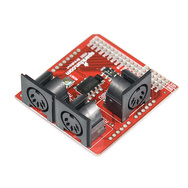
Next is the MIDI Breakout Board, which gives your Arduino or any other microcontroller access to the MIDI communication protocol. It is very similar to the shield above, but can be used more easily with other microcontrollers besides the Arduino and is not a shield.
Sharp's GP2Y1010AU0F (try saying that fast three times) is an optical air quality sensor, designed to sense dust particles. An infrared emitting diode and a phototransistor are diagonally arranged into this device, to allow it to detect the reflected light of dust in air. It is especially effective in detecting very fine particles like cigarette smoke, and is commonly used in air purifier systems. We also carry the mating connector housing and the mating connector.
This is a breakout board for the very high-intensity Luxeon Rebel LED. The board is designed to dissipate damaging heat away from the LED to the back of the board. We have this available in several colors: green, red, warm white, cool white, and royal blue.
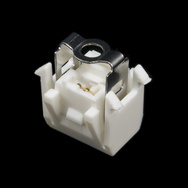
While we are talking about LEDs, this is a solderless LED holder, designed specifically for our Rebel Luxeon LEDs. This product includes both the plastic contact carrier as well as the LED retention clip.
The Cellular Shield for Arduino includes all the parts needed to interface your Arduino with an SM5100B cellular module. This allows you to easily add SMS, GSM/GPRS, and TCP/IP functionalities to your Arduino-based project. All you need to add cellular functionality to your Arduino project is a SIM card (pre-paid or straight from your phone) and an antenna!
This PIC programmer, from Cana Kit, is a professional USB PIC Programmer offering ZIF (Zero Insertion Force) sockets, an ICSP header, and an ICD2 port for easy PIC programming. This PIC Programmer uses a USB port for power and connection to the computer, as opposed to the traditional serial port, eliminating the need for a separate power supply.
Also from Cana Kit is the L298 Dual H-Bridge Motor Driver Integrated Circuit. The circuit will allow you to easily and independently control two motors of up to 2A each in both directions, making it ideal for robotic applications and well suited for connection to a microcontroller requiring just a couple of control lines per motor.
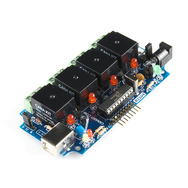
Continuing with the Cana Kit, this USB Relay Controller/Data Acquisition Module allows computer controlled switching of external devices as well as full bi-directional communication with the external world (ideal for Data Acquisition applications) using the USB port of your computer. The controller is very flexible and can be used in many custom applications.
If you want to control the speed of a DC motor but don't want to sacrifice any torque, this Motor Controller from Cana Kit is for you. This controller uses pulse-width modulation (PWM) and can provide up to a maximum continuous current of 50A to your DC motor or other DC load.

This is a nice and simple breakout board for USB microB. This board breaks out a micro-B USB connector's VCC, GND, D- and D+ pins to a 0.1" pitch header. If you want to use the handy USB micro interface but don't want to solder tiny connections, this is for you.
Next we have a bunch of new faceplates designed for used with the Chameleon 1 Enclosure! The one pictured above is a perfect fit for the Olimex SAM7 P64 or P256 development board. We also have faceplates for use with the Olimex 20 or 28-pin AVR development board, the Atmel NGW100 AVR32 development board, the FriendlyARM mini2440 development board, the ET-AVR development board, the Arduino USB development board, and a blank faceplate if you want to create your own.
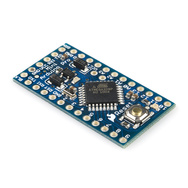
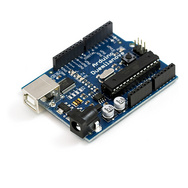
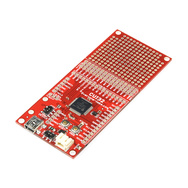
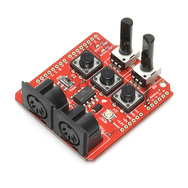
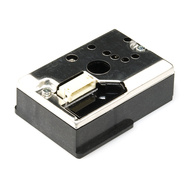
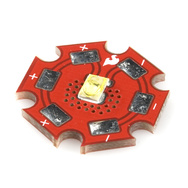
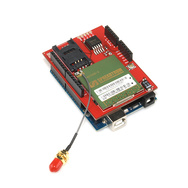
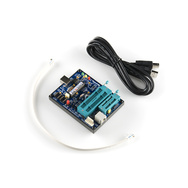
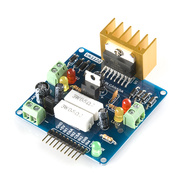
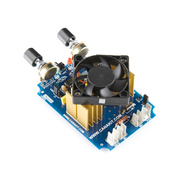
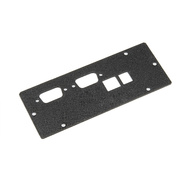
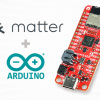






Dear sparkfun....
I have your news added to my my.yahoo home page as an rss feed. But it doesn't seem to be working. last update i have is from a month ago. is it you or yahoo??
Our feed stuff has been glitching all over the place lately. Should be fixed next time we deploy a new version of the site, if not sooner.
Does anyone have recommendations for a current limiting power supply for your 1 Watt leds? I have a project that might require a lot of them and these current limiting power supplies get expensive. Sparkfun has this http://www.sparkfun.com/commerce/product_info.php?products_id=9642 which seems nice, but for me I'd rather have something that drives a bunch at once.
Also unique to my project I only need to flash the LEDs for a short duration (1/1000th of a second at most). I want them to be a bright as possible so I'm wondering if I could save money on powersupplies by just driving them with a 5V power supply and no current limiting. This would also make them brigheter which is very good for my use. It is fine if they burn out after a few tens of thousands of 1/1000th second bursts, but they'd need to last more than a few hundred uses. I know I could just test it, but it would be nice to hear from someone more knowledgeable if they think this would work or not.
You'll always have a current limiter in line with the LED -- if you connect it directly to the battery it's just the internal resistance of the battery (and probably the gate resistance of whatever you're using to switch it). You probably want to still include at least a few ohms of resistance, so you're not relying on these poorly-documented values (and find that your LED blows out when you change batteries and the new one can source more current). Pulsing higher currents through LEDs is a time-honored technique; look up the LM3909 application note for more information. Your LEDs will have a "peak current" limit as well as a "steady state" current limit, and the peak current limit will usually have a duty cycle specified. As long as you stay below the appropriate duty cycle, you can pulse the peak current, which will be brighter (and use less power in the end).
A constant-voltage source and a resistor is a fine constant-current power supply -- remember to take the forward voltage of the LED into account.
Typo in the third-to-last paragraph: "pulse-width modulation (PWN)" should be "pulse-width modulation (PWM)".
I don't know what a motor PWN is, but I want two. Maybe 5.
But what a great typo it is.
My motor PWNs!
Ha! Nice. Fixed though :)